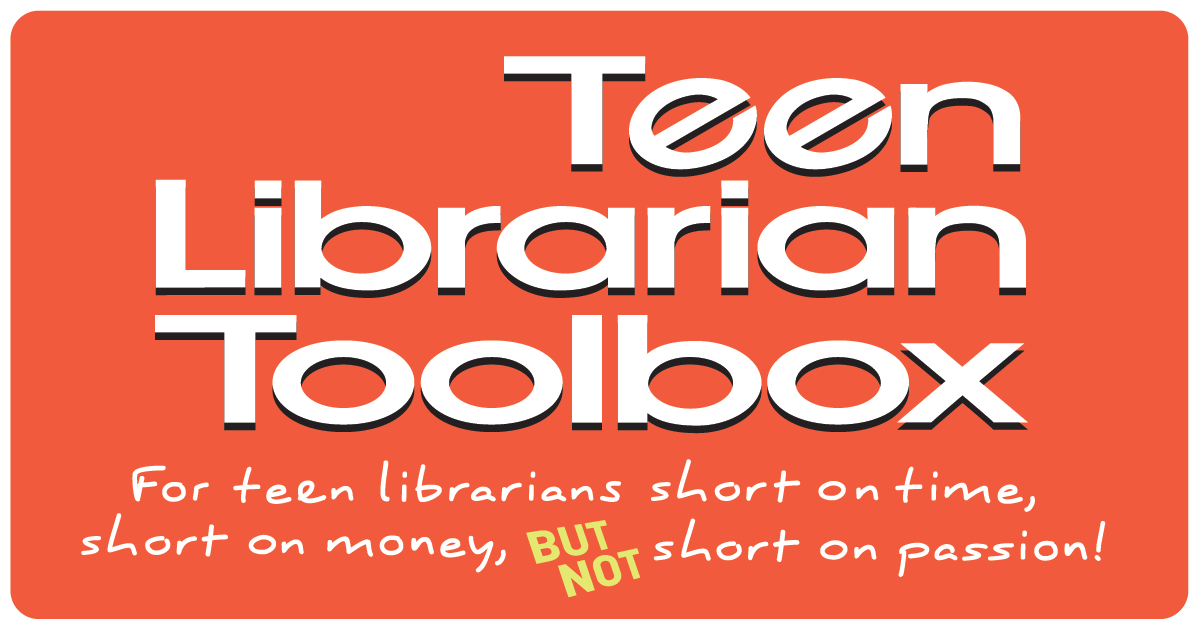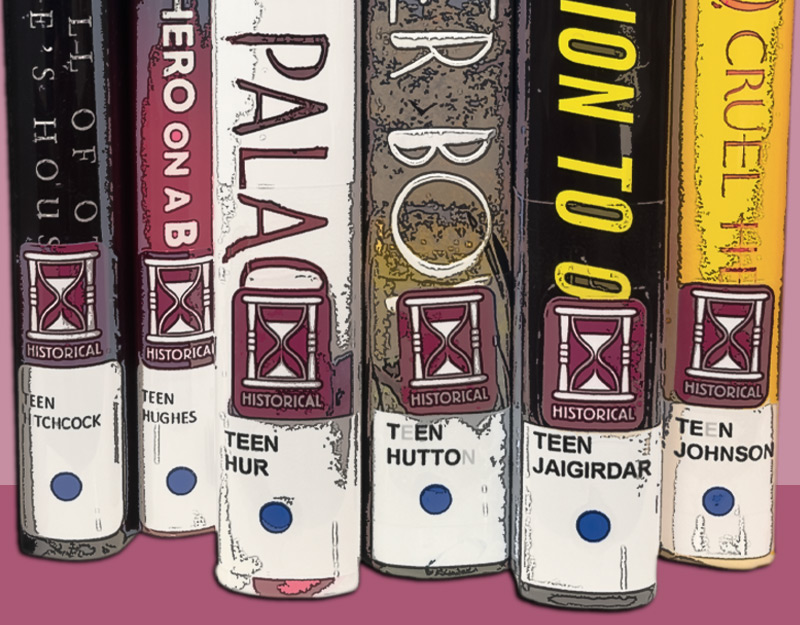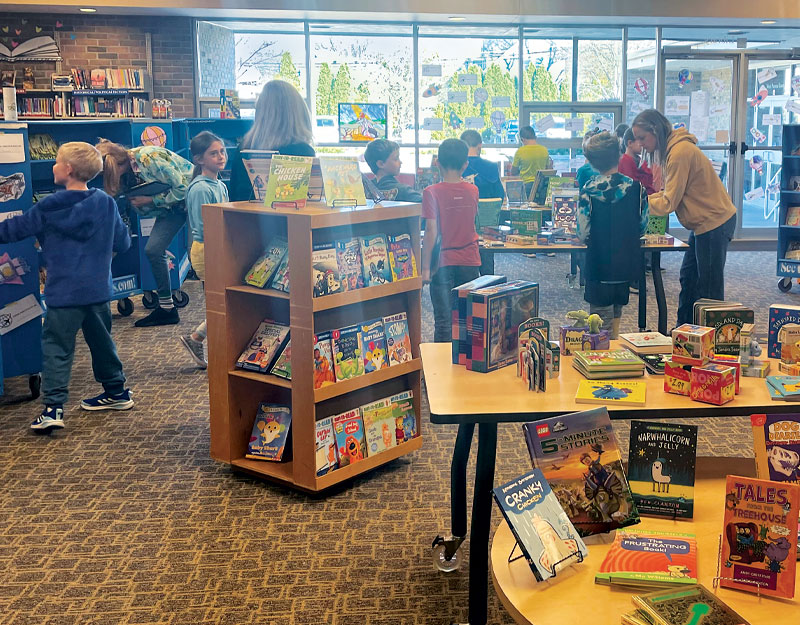In Our Mailbox: How to resurrect a long dead TAG, take II
 Earlier today, Heather Booth answered a question that came in our mailbox from a librarian wanting to breathe some new life into a TAG (Teen Advisory Group). Heather is wise in the way of TAGs and offers a lot of great advice, but I am going to offer another approach.
Earlier today, Heather Booth answered a question that came in our mailbox from a librarian wanting to breathe some new life into a TAG (Teen Advisory Group). Heather is wise in the way of TAGs and offers a lot of great advice, but I am going to offer another approach.
TAG as Content Creators
In my first library position, I started a TAG. Every month we met and talked and eventually what they decided is that they wanted to put together a monthly newsletter, which we did. They wrote book, movie and music reviews. They wrote poems and short stories. And because this was more than 10 years ago, we laid it all out on my computer and we printed and copied it for distribution around the library. This would easily translate to today into things like running a blog or Tumblr and this group of teens would have loved that. They were great teens, we had a lot of fun and they enjoyed the opportunity to express themselves. This is what worked for this TAG at this time and because of that it was awesome.
ADVERTISEMENT
ADVERTISEMENT
When I moved to my next position, they had an established TAG that met twice a month in much more formal meetings. In these meetings we spent a lot of time suggesting programming ideas, deciding on TSRC prizes, etc. This particular group was a very academically minded group who participated because they wanted not only the extra credit for things like National Honor Society but because they wanted service credit hours to put on their college applications. This meant that not only were they participating in TAG, but they were often participating in 1 million other extra curricular activities because the more, the better. It also meant that the library was often lowest on their list when it came to coming through. So inevitably program day would come and often not one single TAG member showed up to help. They weren’t bad teens, in fact that were really pretty awesome, they were just over committed teens. So although they did give input, they didn’t always follow through on the execution of that input. So I would say this TAG was a mixed bag in terms of meeting its goals and objectives.
Informal Teen Input
In my third library position I got to start everything from scratch. All of it. And it was awesome. So you would think that the first thing I would do would be to start a TAG, except I didn’t. The first thing I did was put together an after school program to help address the flood of teens that came into the library that were causing some serious behavioral and safety issues. And what I found was that as I spent afternoons with this large group of teens – often between 70 and 100 teens – and built a relationship with them, they became a de facto TAG. We talked about books, we talked about programs and services, and they felt really free to express themselves with me. So here I had a much more diverse group of teens telling me in an informal setting the very things I had been begging teens to tell me in a TAG meeting. But because of the setting, it often seemed like they felt more free to be honest. Many of these teens would never have joined a TAG because they simply weren’t interested in service credit hours to put on their college applications and they were exactly the teens we needed input from and, at first quite by accident, we found a way to get it and it made an incredible amount of difference in our library services.
TAG + Teen Volunteers
When I began my current library position, the library had an established Teen Volunteer Group, which it turns out I really love. So I did a lot of research, in part to help write my part of the book Heather and I wrote, and I made a few slight adjustments to our Teen Volunteer Program. Some of it was minor, like clarifying a few processes (particularly in regards to handling any issues that may come up with teen volunteers) and a few minor things like adding some expectations to our teen volunteer application. But the other change I made was to turn the teen volunteer program into a part-time pseudo TAG by making part of the participation guidelines coming to a quarterly meeting. This quarterly meeting serves a few purposes:
1. It allows me to check in with the teen volunteers as a group to make sure we are all on the same page with expectations and practices. It’s basically like a staff meeting to facilitate communication and do some team building.
2. It allows me to pick their brains in the same way I would a TAG by asking them questions about books, programs, and services.
The benefit for the teens is that it allows them the opportunity to participate in the library and get service credit hours, but on their own schedule. So teens don’t have to make sure they can attend a meeting every other Monday all at the same time, but they schedule their hours with me and we both get more flexibility. Plus, I still meet with them one on one when they come in to volunteer and I can pick their brain. Sometimes, actually, they feel more free to talk with me because there isn’t that added peer pressure that you find in a large group of teens.
ADVERTISEMENT
ADVERTISEMENT
I have enjoyed this model tremendously because I feel like I get the best of both worlds: I am getting teen involvement in a variety of ways – both formally and informally – and yet all participants get the scheduling flexibility.
Don’t get me wrong, running a teen volunteer program is in many ways more challenging than running a TAG, mostly in terms of the amount of time I deal with schedules. There IS a benefit to having that set schedule because it eliminates the need to constantly talk with teens about schedules, adjust schedules, and then adjust them again. In fact, running a teen volunteer group is remarkably similar to managing a small staff. Just last week I sent out reminder emails about expectations and some behavior issues.
There is No One Right Way to Play TAG
There are a variety of TAG models out there in YA library world. Right now, I am very happy with the model that I have and I recommend investigating it to see if it works for you. At some point, if it stops to work for me, I will investigate other models. The important thing is to find the right one for your community and library and run with it. What we want is to give teens a voice in the library and make sure we are providing the services and resources they need, there is no one right way to do that, there’s just what works best for your library given your community, staff, time, etc.
I should mention that the YALSA Wiki has some information on TAGs (http://wikis.ala.org/yalsa/index.php/Teen_Advisory_Groups) and that our book, The Whole Library Handbook: Teen Services, has some good information on TAGs, Teen Volunteer programs, and getting teen input.
Filed under: Uncategorized
About Karen Jensen, MLS
Karen Jensen has been a Teen Services Librarian for almost 30 years. She created TLT in 2011 and is the co-editor of The Whole Library Handbook: Teen Services with Heather Booth (ALA Editions, 2014).
ADVERTISEMENT
ADVERTISEMENT
SLJ Blog Network
One Star Review, Guess Who? (#202)
This Q&A is Going Exactly As Planned: A Talk with Tao Nyeu About Her Latest Book
Exclusive: Giant Magical Otters Invade New Hex Vet Graphic Novel | News
Parsing Religion in Public Schools
ADVERTISEMENT







